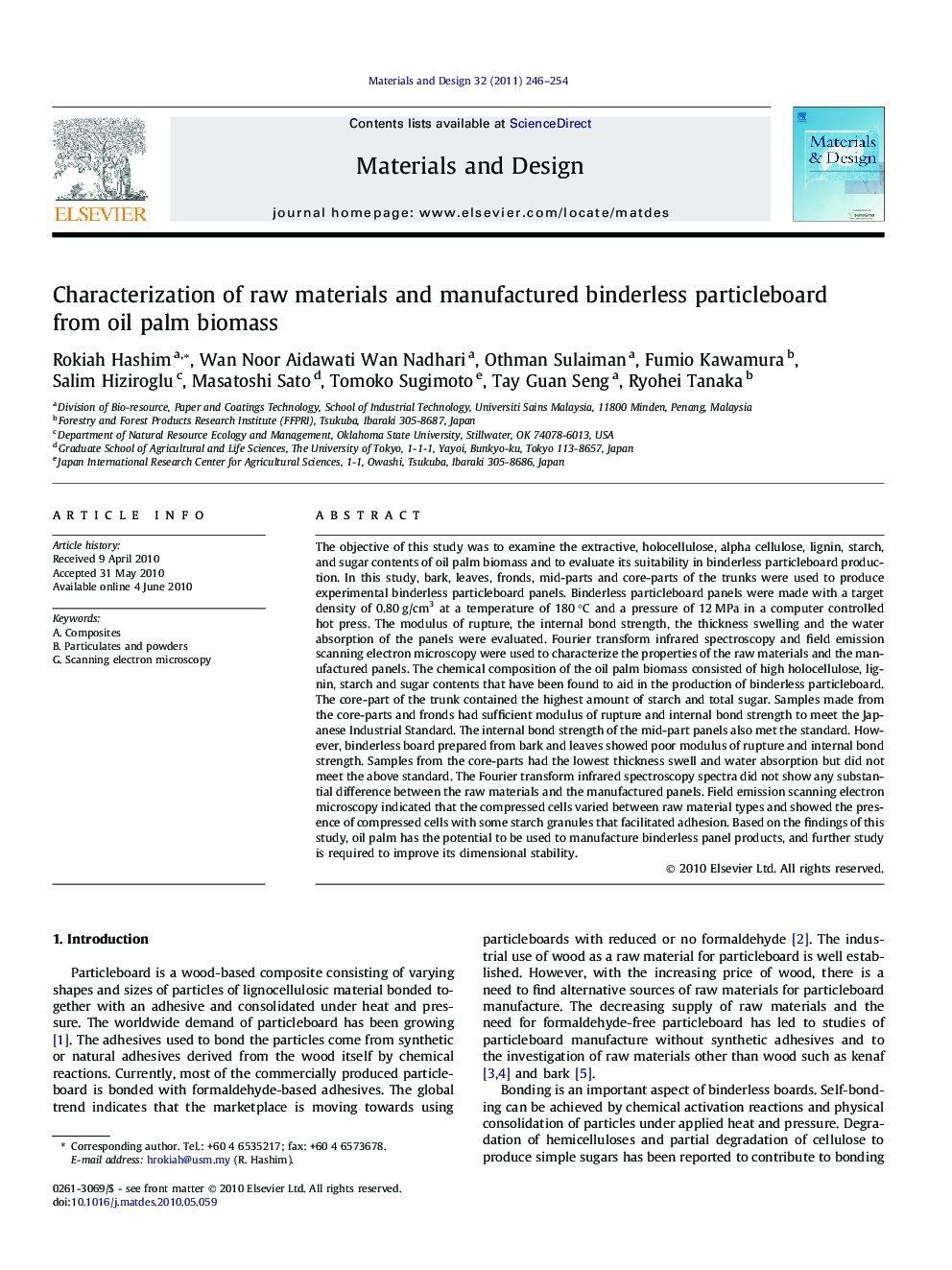| کد مقاله | کد نشریه | سال انتشار | مقاله انگلیسی | نسخه تمام متن |
|---|---|---|---|---|
| 831717 | 908109 | 2011 | 9 صفحه PDF | دانلود رایگان |

The objective of this study was to examine the extractive, holocellulose, alpha cellulose, lignin, starch, and sugar contents of oil palm biomass and to evaluate its suitability in binderless particleboard production. In this study, bark, leaves, fronds, mid-parts and core-parts of the trunks were used to produce experimental binderless particleboard panels. Binderless particleboard panels were made with a target density of 0.80 g/cm3 at a temperature of 180 °C and a pressure of 12 MPa in a computer controlled hot press. The modulus of rupture, the internal bond strength, the thickness swelling and the water absorption of the panels were evaluated. Fourier transform infrared spectroscopy and field emission scanning electron microscopy were used to characterize the properties of the raw materials and the manufactured panels. The chemical composition of the oil palm biomass consisted of high holocellulose, lignin, starch and sugar contents that have been found to aid in the production of binderless particleboard. The core-part of the trunk contained the highest amount of starch and total sugar. Samples made from the core-parts and fronds had sufficient modulus of rupture and internal bond strength to meet the Japanese Industrial Standard. The internal bond strength of the mid-part panels also met the standard. However, binderless board prepared from bark and leaves showed poor modulus of rupture and internal bond strength. Samples from the core-parts had the lowest thickness swell and water absorption but did not meet the above standard. The Fourier transform infrared spectroscopy spectra did not show any substantial difference between the raw materials and the manufactured panels. Field emission scanning electron microscopy indicated that the compressed cells varied between raw material types and showed the presence of compressed cells with some starch granules that facilitated adhesion. Based on the findings of this study, oil palm has the potential to be used to manufacture binderless panel products, and further study is required to improve its dimensional stability.
Journal: Materials & Design - Volume 32, Issue 1, January 2011, Pages 246–254